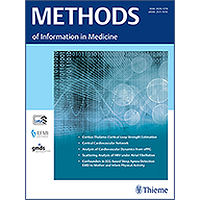Background: Due to the complexity of healthcare processes, the potential for Health Information Systems (HIS) to cause technology -induced errors is a growing concern. Health Information Technology (HIT) errors nearly always threaten good patient care and can lead to patient harm. Instruments to allow hospitals to proactively identify areas of Electronic Health Records (EHR) safety, to set priorities and to intervene before incidents occur are currently underdeveloped.Objectives: The aim was to design a Finnish questionnaire to measure EHR users' perceptions of common EHR-related safety concerns in a specialized hospital district context through the lens of the theory of socio-technical dimensions. Moreover, the aim was to measure its reliability by assessing its internal consistency and validity, namely its content and construct validity.Methods: We constructed the instrument, based on the socio-technical theory and Sittig and Singh's study findings, through a multi-stage process, and expert panels evalu-ated it to ensure its content validity. The final questionnaire consisted of eight error types to be assessed on a qualitative risk matrix scale. We used a cross-sectional design to test its psychometric properties. Application of the FIN-TIERA Questionnaire to a sample of 2864 clinicians in 2015 then served to evaluate the instrument's reliability as well as its construct validity.Results: All eight multi-item scales showed high internal consistency (range alpha > 0.798-0.932 and CR 0.845-0.983). The average variance extracted (AVE) served to assess the confirmatory factor analysis (CFA). The results of the model fit with AGFI = .86, CFI = .898, RMSEA = .052, SRMR = .048 were deemed acceptable. For all factors, AVE yielded values > 0.5, which indicates adequate convergence and supports convergent validity. Discriminant validity was established for five out of a total of eight latent variables.Conclusions: FIN-TIERA is a new multi-dimensional instrument which may be a useful tool for assessing risk in EHR. Our testing shows its potential for use in-hospital settings: the involvement of EHR users demonstrated initial reliability and validity. Further research is recommended to assess the instrument's psychometric properties.

FIN-TIERA: A Tool for Assessing Technology Induced Errors
Review badges
0 pre-pub reviews
0 post-pub reviews